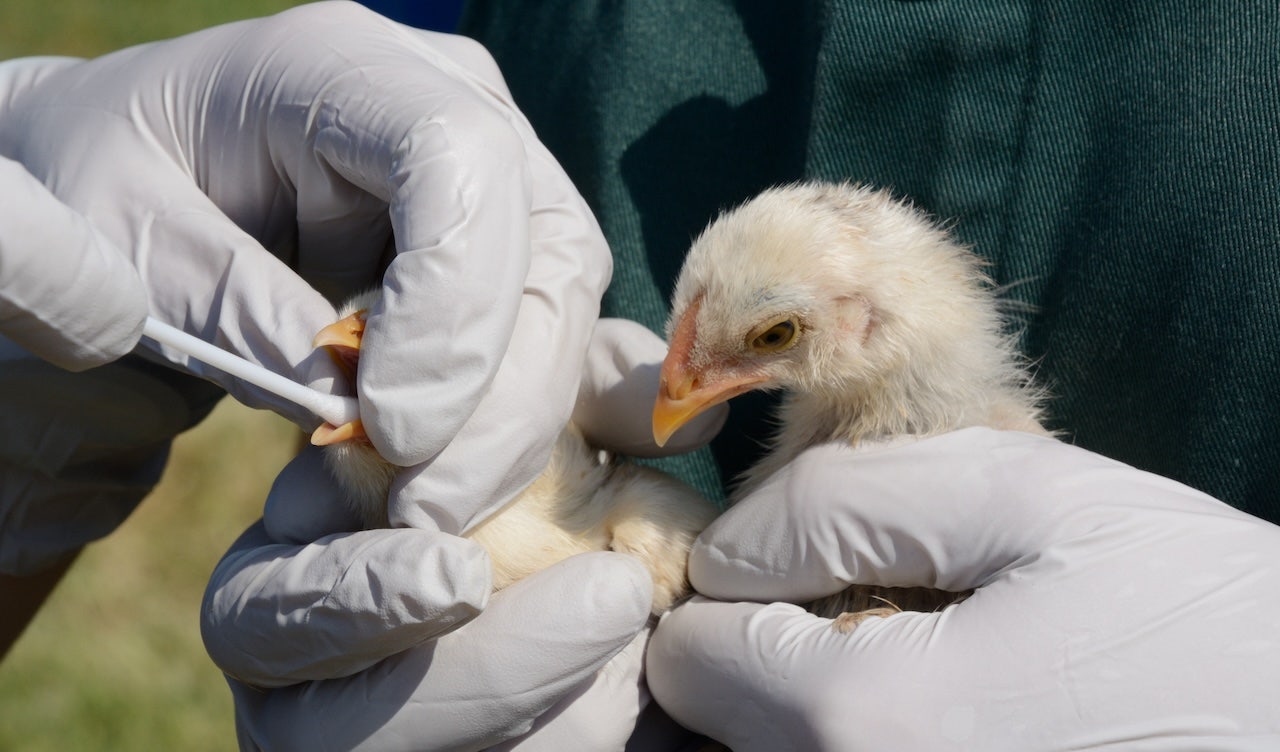Health
Fourth of July fireworks: 4 tips to help veterans and other PTSD sufferers enjoy the holiday

The Fourth of July should be a day for all Americans to celebrate our nation’s birthday.
But for some, especially America’s heroes, celebratory traditions like setting off fireworks can be mentally and emotionally grueling.
Research has shown that fireworks can trigger PTSD symptoms, as detailed in a 2020 blog post published by Penn Medicine News.
WHAT IS PTSD? SYMPTOMS THAT CAN EMERGE AFTER EXPERIENCING A TRAUMATIC EVENT
As the explosives are usually set off at night, with bright flashes and loud bangs that come at inconsistent intervals, veterans may struggle with these celebrations.
In an interview with Fox News Digital, Florida family physician and former Navy Officer Dr. Christopher Scuderi offered tips for people with PTSD to prepare for the sudden, loud noises of the Fourth of July holiday.
Independence Day is celebrated with fireworks over the Empire State Building in New York City on July 4, 2023. (Fatih Aktas/Anadolu Agency)
Here are four.
1. Talk to neighbors
PTSD sufferers should ask their neighbors if they plan to set off fireworks so they aren’t caught off guard if it does happen, Scuderi said.
In a previous interview with Fox News Digital, Dr. Tony Brooks, a combat veteran based in Everett, Washington, also recommended having this “simple human-to-human conversation.”

Speaking with neighbors about their firework plans can bring mental relief to veterans, experts say. (iStock)
He recommended that anyone planning to set off fireworks brings up the topic casually in conversation.
This step offers an opportunity for others to voice their concerns without forcing them to admit something they may wish to keep private.
FDA PANEL REJECTS MDMA-ASSISTED THERAPIES FOR PTSD DESPITE HIGH HOPES FROM VETERANS
Veterans who have issues with fireworks will most likely speak up if they’re mentioned, according to Brooks — even if the response is as simple as, “I’m not a fan of them.”
2. Gear up
For veterans who will be indoors, Scuderi recommended darkening the room, as well as using ear protection, such as foam earplugs or noise-canceling headphones, while fireworks are going off.
“Have some items around the house that can help with self-care before the holiday that will center you if you are exposed to loud noises,” he advised.

One expert suggested using earplugs or noise-canceling headphones while fireworks are going off. (iStock)
For those planning on being out in the evening, Scuderi suggested having a designated driver in case triggers occur.
3. Practice relaxation techniques
Having self-soothing methods on deck during stressful times can be helpful, according to Scuderi.
This might include deep breathing exercises to calm the nervous system or other mindfulness techniques, like mindful eating using “all of your senses (how does the food look, smell, feel),” Scuderi said.
AS 4TH OF JULY APPROACHES, HERE’S WHAT TO KNOW ABOUT VETERANS, PTSD AND FIREWORKS
“Sometimes the 5-4-3-2-1 sensory exercise can help with recentering,” the physician said.
“What are five things you can see, four things you can hear, three things you can feel, two things you can smell, and one good or grateful thing you can say about yourself?”

Practicing mindfulness and breathing techniques can come in handy during loud fireworks, an expert said. (iStock)
Scuderi also recommended practicing positive self-talk.
CLICK HERE TO SIGN UP FOR OUR HEALTH NEWSLETTER
“Just reminding yourself that you are in a safe zone can help,” he said.
“Accept your emotions and remind yourself that [fireworks] are startling for anyone, and that you are safe.”
4. Cool the body down
Especially during the hot summer months, Scuderi suggested cooling the body temperature by taking a cold shower or using an ice cube or bag of frozen vegetables on the skin.
For more Health articles, visit www.foxnews/health
“[This] can help with PTSD triggers,” he said.

A vendor sells American flags to spectators waiting for the start of the Independence Day firework show at the Washington Monument on July 4, 2022, in Washington, D.C. (Nathan Howard)
Not every PTSD sufferer is the same, Brooks mentioned, as many veterans enjoy Fourth of July fireworks.
For veterans who are struggling with their symptoms, Scuderi suggested reaching out to VA resources like the PTSD Coach mobile app of VA crisis line 1-800-273-8255.
“Or talk to your family physician about options for treatment,” he added.

Health
How The Great British Bake Off Host Alison Hammond Lost 150 Lbs Naturally

Sign Up
Create a free account to access exclusive content, play games, solve puzzles, test your pop-culture knowledge and receive special offers.
Already have an account? Login
Use left and right arrow keys to navigate between menu items.
Use escape to exit the menu.
Health
One state leads country in human bird flu with nearly 40 confirmed cases

A child in California is presumed to have H5N1 bird flu, according to the San Francisco Department of Public Health (SFDPH).
As of Dec. 23, there had been 36 confirmed human cases of bird flu in the state, according to the California Department of Public Health (CDPH).
This represents more than half of the human cases in the country.
LOUISIANA REPORTS FIRST BIRD FLU-RELATED HUMAN DEATH IN US
The latest pediatric patient, who lives in San Francisco, experienced fever and conjunctivitis (pink eye) as a result of the infection.
The unnamed patient was not hospitalized and has fully recovered, according to the SFDPH.
A child in California is presumed to have H5N1 bird flu, according to the San Francisco Department of Public Health. (iStock)
The child tested positive for bird flu at the SFDPH Public Health Laboratory. The U.S. Centers for Disease Control and Prevention (CDC) will perform additional tests to confirm the result.
CLICK HERE TO SIGN UP FOR OUR HEALTH NEWSLETTER
It is not yet known how the child was exposed to the virus and an investigation is ongoing.
“I want to assure everyone in our city that the risk to the general public is low, and there is no current evidence that the virus can be transmitted between people,” said Dr. Grant Colfax, director of health, in the press release.
BIRD FLU PATIENT HAD VIRUS MUTATIONS, SPARKING CONCERN ABOUT HUMAN SPREAD
“We will continue to investigate this presumptive case, and I am urging all San Franciscans to avoid direct contact with sick or dead birds, especially wild birds and poultry. Also, please avoid unpasteurized dairy products.”
Samuel Scarpino, director of AI and life sciences and professor of health sciences at Northeastern University in Boston, is calling for “decisive action” to protect individuals who may be in contact with infected livestock and also to alert the public about the risks associated with wild birds and infected backyard flocks.

An infectious diseases expert called for “decisive action” to alert the public about the risks associated with wild birds and infected backyard flocks. (iStock)
“While I agree that the risk to the broader public remains low, we continue to see signs of escalating risk associated with this outbreak,” he told Fox News Digital.
Experts have warned that the possibility of mutations in the virus could enable person-to-person transmission.
“While the H5N1 virus is currently thought to only transmit from animals to humans, multiple mutations that can enhance human-to-human transmission have been observed in the severely sick American,” Dr. Jacob Glanville, CEO of Centivax, a San Francisco biotechnology company, told Fox News Digital.

As of Jan. 10, there have been a total of 707 infected cattle in California, per reports from the California Department of Food and Agriculture. (iStock)
“This highlights the requirement for vigilance and preparation in the event that additional mutations create a human-transmissible pandemic strain.”
As of Jan. 10, there have been a total of 707 infected cattle in California, per reports from the California Department of Food and Agriculture (CDFA).
For more Health articles, visit www.foxnews.com/health
In the last 30 days alone, the virus has been confirmed in 84 dairy farms in the state.
Health
Chronic Pain Afflicts Billions of People. It’s Time for a Revolution.

“In the beginning, everyone thought they were going to find this one breakthrough pain drug that would replace opioids,” Gereau said. Increasingly, though, it’s looking like chronic pain, like cancer, could end up having a range of genetic and cellular drivers that vary both by condition and by the particular makeup of the person experiencing it. “What we’re learning is that pain is not just one thing,” Gereau added. “It’s a thousand different things, all called ‘pain.’”
For patients, too, the landscape of chronic pain is wildly varied. Some people endure a miserable year of low-back pain, only to have it vanish for no clear reason. Others aren’t so lucky. A friend of a friend spent five years with extreme pain in his arm and face after roughhousing with his son. He had to stop working, couldn’t drive, couldn’t even ride in a car without a neck brace. His doctors prescribed endless medications: the maximum dose of gabapentin, plus duloxetine and others. At one point, he admitted himself to a psychiatric ward, because his pain was so bad that he’d become suicidal. There, he met other people who also became suicidal after years of living with terrible pain day in and day out.
The thing that makes chronic pain so awful is that it’s chronic: a grinding distress that never ends. For those with extreme pain, that’s easy to understand. But even less severe cases can be miserable. A pain rating of 3 or 4 out of 10 sounds mild, but having it almost all the time is grueling — and limiting. Unlike a broken arm, which gets better, or tendinitis, which hurts mostly in response to overuse, chronic pain makes your whole world shrink. It’s harder to work, and to exercise, and even to do the many smaller things that make life rewarding and rich.
It’s also lonely. When my arms first went crazy, I could barely function. But even after the worst had passed, I saw friends rarely; I still couldn’t drive more than a few minutes, or sit comfortably in a chair, and I felt guilty inviting people over when there wasn’t anything to do. As Christin Veasley, director and co-founder of the Chronic Pain Research Alliance, puts it: “With acute pain, medications, if you take them, they get you over a hump, and you go on your way. What people don’t realize is that when you have chronic pain, even if you’re also taking meds, you rarely feel like you were before. At best, they can reduce your pain, but usually don’t eliminate it.”
A cruel Catch-22 around chronic pain is that it often leads to anxiety and depression, both of which can make pain worse. That’s partly because focusing on a thing can reinforce it, but also because emotional states have physical effects. Both anxiety and depression are known to increase inflammation, which can also worsen pain. As a result, pain management often includes cognitive behavioral therapy, meditation practice or other coping skills. But while those tools are vital, it’s notoriously hard to reprogram our reactions. Our minds and bodies have evolved both to anticipate pain and to remember it, making it hard not to worry. And because chronic pain is so uncomfortable and isolating, it’s also depressing.
-

 Politics1 week ago
Politics1 week agoCarter's judicial picks reshaped the federal bench across the country
-

 Politics1 week ago
Politics1 week agoWho Are the Recipients of the Presidential Medal of Freedom?
-

 Health1 week ago
Health1 week agoOzempic ‘microdosing’ is the new weight-loss trend: Should you try it?
-

 World1 week ago
World1 week agoSouth Korea extends Boeing 737-800 inspections as Jeju Air wreckage lifted
-
/cdn.vox-cdn.com/uploads/chorus_asset/file/25822586/STK169_ZUCKERBERG_MAGA_STKS491_CVIRGINIA_A.jpg)
/cdn.vox-cdn.com/uploads/chorus_asset/file/25822586/STK169_ZUCKERBERG_MAGA_STKS491_CVIRGINIA_A.jpg) Technology4 days ago
Technology4 days agoMeta is highlighting a splintering global approach to online speech
-

 News1 week ago
News1 week agoSeeking to heal the country, Jimmy Carter pardoned men who evaded the Vietnam War draft
-

 News1 week ago
News1 week agoTrump Has Reeled in More Than $200 Million Since Election Day
-

 News1 week ago
News1 week agoThe U.S. Surgeon General wants cancer warnings on alcohol. Here's why



/cdn.vox-cdn.com/uploads/chorus_asset/file/25822588/STK169_ZUCKERBERG_MAGA_STKS491_CVIRGINIA_B.jpg)










